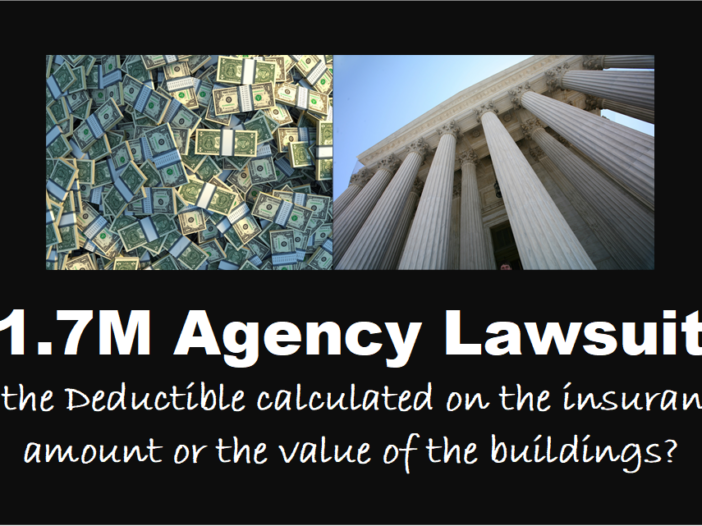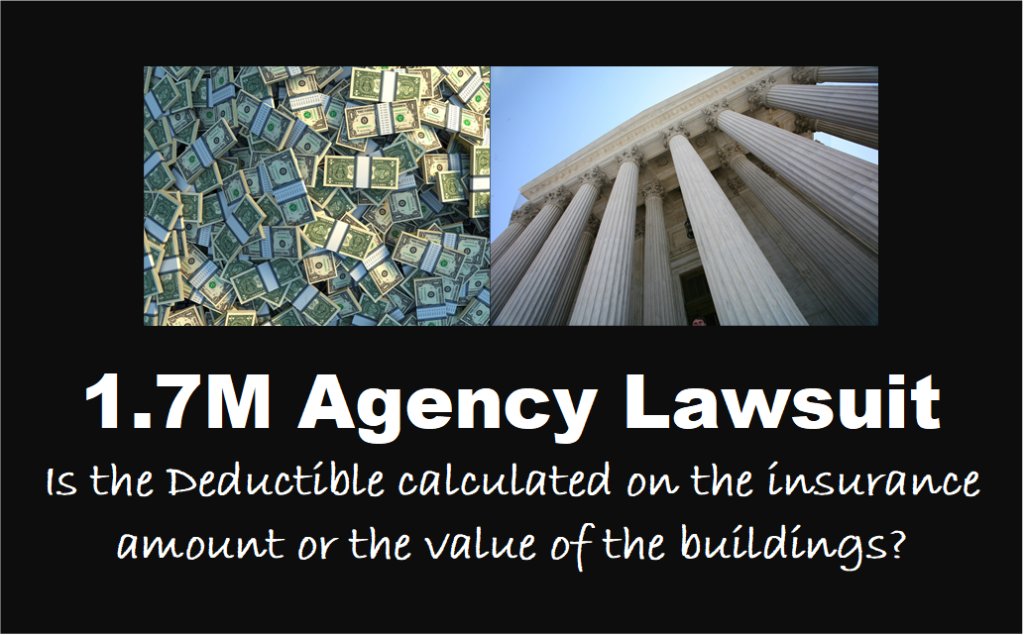
By AgencyEquity.com
A Louisiana insurance agent recommended an endorsement to two clients. They later claimed the recommendation cost them $1.7 million.
The clients were two limited liability companies that owned habitational buildings at two Louisiana naval air stations. They retained the agency to obtain commercial property insurance on the buildings in April 2020. The first policy insured the buildings for almost $107.7 million dollars at a premium of more than $1 million. It included an endorsement that applied a named storm deductible of “3% of Total Insurable Value at the time of the loss at each Insured Location involved in the loss or damage.”

During that first term, Hurricane Zeta damaged the buildings. The 3% named storm deductible amounted to $3,230,069. When the policy came up for renewal, the agency recommended coverage with a “per building deductible” (it is unclear from the court’s opinion whether the coverage was from the same carrier.) This endorsement changed the named storm deductible calculation from:
- 3% of “Total Insurable Values at the time of the loss at each Insured Location involved in the loss damage“
To:
- 3% of “Total Insurable Values at the time of the loss for each Building involved in the loss or damage at each Insured Location involved in the loss or damage.”
The agency told them that this deductible “would be more beneficial in the event of a smaller loss where only some of the buildings at the property locations, rather than all of them, are affected.” The insureds bought the endorsement for an additional premium of $8,142. The new policy increased the buildings’ insured value to $112.6 million and carried a premium of almost $1.3 million.
In August 2021 Hurricane Ida damaged all of the buildings and the carrier applied the 3% per building deductible. However, “the underwriters” (the phrase used by the court) estimated the total insurable values of the buildings at the time of the loss to be $169.3 million, $57 million more than the policy limits. Consequently, the deductible was $1.7 million more than the insureds expected.
The insureds sued, claiming the agency never disclosed how the estimated total property values were calculated when they obtained the policies. The insureds also charged that the increased valuation was a direct result of the agency’s recommended “per building deductible” endorsement.
The agency argued that there was no connection between the new deductible and the increased values. They asked the court to dismiss the suit.
The judge ruled that the insureds had no basis for a claim. “(T)he Per Building Deductible Endorsement,” he wrote, “… contains no language related to how the underwriters would value the property. This language is contained in a different section of the contract …” Noting that even the insureds conceded that the carrier’s underwriters, not the agency, calculated the insurable values, he found no evidence that the per building deductible endorsement had any effect on the property valuation. He also ruled that the insureds had not shown that the agency was responsible for the increase in estimated insurable value. Accordingly, he dismissed the suit against the agency.
The real issue in this case seems to be a gross underestimation of the property values when the second policy was written. If indeed the carrier calculated the values, the agency had no reason to question that calculation. If anyone had a duty to question the values, it was the owners of properties worth more than $100 million. Companies with the means to own assets worth that much also have the means to obtain an independent appraisal of the cost to replace them. The insureds accepted the carrier’s estimate without getting a second opinion, then tried to blame the agency when things went wrong.
This agency appears to have done its job. They got dragged into court only because their clients wanted someone to blame for their higher deductible. Unfortunately, events like this can happen to even the best agencies. Good errors and omissions loss prevention makes these events less likely, but it cannot eliminate the possibility.















